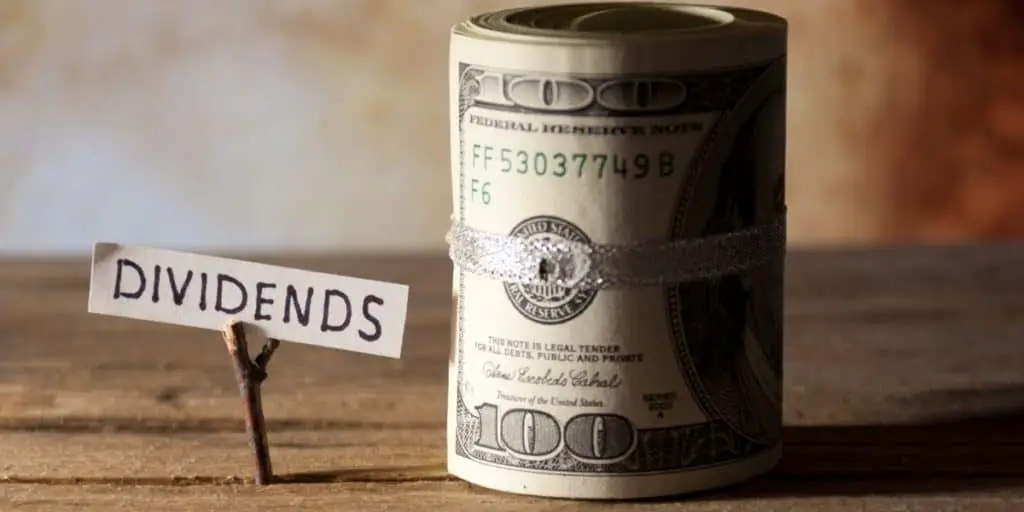Every investor’s dream is to be able to live off earnings from investments. For many, 100K a year is just about the figure they need to make to achieve that dream. But just how much capital do you need to make that much without touching your principal?
You need to invest about $2 million to make $100k a year through debt and equity securities. Depending on the investment you choose, its rate of return, and how much you desire to diversify, you may even need more than $2 million.
Read on to get some more perspective on the principal you need to invest to make 100k per year leveraging different returns avenues, including interest and dividend payments.
IMPORTANT SIDENOTE: I surveyed 1500+ traders to understand how social trading impacted their trading outcomes. The results shocked my belief system! Read my latest article: ‘Exploring Social Trading: Community, Profit, and Collaboration’ for my in-depth findings through the data collected from this survey!
Table of Contents
How Much You Need To Invest To Make $100k/Year in Dividends?
The first step in estimating how much you need to invest to make $100k per year in dividends is determining what to invest in.

The fact that we’re talking about dividends already shows that we’re talking about stocks. The question is, what kind of stocks? As far as your options go, you have dividend stocks and growth stocks.
In my opinion, dividend stocks would be the safer bet for someone looking to maximize their dividend earnings. They pay dividends regularly, with a higher yield than growth stocks. And since high dividend payers are typically mature companies with solid track records of financial stability, dividend stocks carry less risk than their growth counterparts.
Having identified what to invest in, let’s get to the math behind estimating the investment size you need to earn $100k in annual dividends.
The Math Behind It All
To calculate the size of investment size required to earn $100k in dividends, we need to know the following values:
- The share price of the stock you’re investing in.
- The dividend yield that is offered by each share you own.
With these two values at hand, it’s easy to estimate the required investment size. But since different stocks have varying share prices and dividend yields, we’re going to need to make a few assumptions so I can demonstrate how to go about the calculation.
To make things more realistic, let’s use the current numbers for Iron Mountain Inc (ticker: IRM), one of the best high dividend payers in the US over the last few years. At the time of writing, IRM’s share price and dividend yield are as follows:
- Dividend yield: 5.2%. FYI, this is on the upper end of what’s considered a good dividend yield.
- Share price: $47.58
A dividend yield shows the portion of a company’s share price paid out to shareholders in dividends every year. Thus, the 5.2% dividend yield means Iron mountain Inc. pays dividends of about $2.5 (5.2/100 x $47.58) per share.
If each share pays $2.5 in dividends, how many shares do you need to make $100,000? The answer is 40,000 shares, calculated by dividing $100,000 by the 2.5-dollar dividend per share.
That means you’d need to invest $1,903,200 (40,000 x $47.58) in this particular company’s stock to make $100k without touching your principal.
Estimating How Much You’ll Need To Invest
In reality, you’ll likely need more than the result of the above calculation. That’s particularly true, considering that we didn’t account for things like fees, commissions, and taxes.
And while almost $2 million might seem like a lot, you might need more depending on the specific stocks you pick for your dividend-focused portfolio. Portfolio? Yes, because you don’t want to invest millions in a single company’s stock.
It’s just too much risk.
For purposes of diversification and protecting your downside, your dividend-focused portfolio will likely feature a blend of dividend stocks from different industries and possibly ETFs. Since the dividend yield may vary across these investments, you’ll likely need to have more than $2 million invested to hit your $100k/month income target using only dividends.
How Much You Need To Invest To Make $100k/Year in Interest?
If you prefer debt over equity investments, your main source of income will be interest instead of dividends.
Regarding what to invest in, your options range from fixed-income securities like bonds and certificates of deposit to fixed annuities. You can also invest in mutual funds that invest in debt securities.
Since we’re talking about many different types of debt securities here (unlike the case of dividends, where it’s just stocks), it’s more challenging to estimate how much you’d need to invest to make $100k per month in interest.
But I still want to give you a rough idea, so let’s choose bonds as a representative of debt investments for the purposes of this discussion.
So far, we have an idea of how much you need to invest in stocks to make $100k in dividends. If we use historical data to compare the return on stocks to bonds, it can help us understand whether you’d need to invest more or less than about $2 million to make the same figure per month through debt investments.
In simpler terms, I’m looking to use the investment requirement for stocks as a benchmark.
According to CNN, stocks have historically provided better returns than government bonds. That is, 10% compared to the 5%-6% return of government bonds. Given such a significant margin, it’s easy to think that you’d need to invest more than $2,000,000 to make $100k per year.
However, that’s not necessarily true given that the return on stocks factors in appreciation, which wasn’t factored in when calculating the size of investment required to earn $100k in dividends.
To add accuracy to our comparison, we need to use the bonds’ interest rates. With a bit of math, we can accurately estimate how much you’d need to have invested to make $100k/year purely in interest.
The Math Involved
For our calculation, we need to know the bond’s interest rate.
To make things more realistic, let’s assume an annual interest rate of 7.12%. Why this figure? Because according to Treasury Direct, that’s the rate that 30-year government-issued I-bonds purchased between November 2021 and April 2022 will pay.
If you were to invest in these bonds at that rate, you’d need an investment of $1,404,494.4 (par value) to earn $100k per year in interest. If we use the 5.2% rate we used as the dividend yield as the bond’s coupon rate, that figure jumps to $1,923,076.9, which is just about the same amount you’d need for stocks.
A Couple Things To Note
Even though we’ve established $2 million as the investment benchmark for making $100k per year, I need you to understand a few things about that estimate.
First off, it can vary with your investment type, taxes, inflation, and fees. Also, our calculations don’t factor in the income you might generate through trading. With the right expertise and knowledge, some traders may reach a point where they make $100k a year with way less than $2 million in initial capital.
The other potentially crucial factor we didn’t consider is reinvestment. Investing dividends and interest can bump up your earnings through compounding, and that’s going to affect how much initial capital you need to hit your target.
The point I’m trying to make is, use these estimates to get a rough idea of where to aim as far as your initial capital goes.
Author’s Recommendations: Top Trading and Investment Resources To Consider
Before concluding this article, I wanted to share few trading and investment resources that I have vetted, with the help of 50+ consistently profitable traders, for you. I am confident that you will greatly benefit in your trading journey by considering one or more of these resources.
- Roadmap to Becoming a Consistently Profitable Trader: I surveyed 5000+ traders (and interviewed 50+ profitable traders) to create the best possible step by step trading guide for you. Read my article: ‘7 Proven Steps To Profitable Trading’ to learn about my findings from surveying 5000+ traders, and to learn how these learnings can be leveraged to your advantage.
- Best Broker For Trading Success: I reviewed 15+ brokers and discussed my findings with 50+ consistently profitable traders. Post all that assessment, the best all round broker that our collective minds picked was M1 Finance. If you are looking to open a brokerage account, choose M1 Finance. You just cannot go wrong with it! Click Here To Sign Up for M1 Finance Today!
- Best Trading Courses You Can Take For Free (or at extremely low cost): I reviewed 30+ trading courses to recommend you the best resource, and found Trading Strategies in Emerging Markets Specialization on Coursera to beat every other course on the market. Plus, if you complete this course within 7 days, it will cost you nothing and will be absolutely free! Click Here To Sign Up Today! (If you don’t find this course valuable, you can cancel anytime within the 7 days trial period and pay nothing.)
- Best Passive Investment Platform For Exponential (Potentially) Returns: By enabling passive investments into a Bitcoin ETF, Acorns gives you the best opportunity to make exponential returns on your passive investments. Plus, Acorns is currently offering a $15 bonus for simply singing up to their platform – so that is one opportunity you don’t want to miss! (assuming you are interested in this platform). Click Here To Get $15 Bonus By Signing Up For Acorns Today! (It will take you less than 5 mins to sign up, and it is totally worth it.)

Conclusion
Now, the above figures may not be the most accurate depiction of the amount of money you’d need to invest in debt and equity securities to earn 100k per year. But one thing is certain; you’ll need to invest more than $1.5 million to make that figure every year.
And considering that the rates we used for our estimations are on the upper end of debt and equity returns and that we haven’t accounted for taxes, inflation, and fees, you might need a couple of million dollars to make a clean $100k per year.
BEFORE YOU GO: Don’t forget to check out my latest article – ‘Exploring Social Trading: Community, Profit, and Collaboration’. I surveyed 1500+ traders to identify the impact social trading can have on your trading performance, and shared all my findings in this article. No matter where you are in your trading journey today, I am confident that you will find this article helpful!
Affiliate Disclosure: We participate in several affiliate programs and may be compensated if you make a purchase using our referral link, at no additional cost to you. You can, however, trust the integrity of our recommendation. Affiliate programs exist even for products that we are not recommending. We only choose to recommend you the products that we actually believe in.
Recent Posts
Exploring Social Trading: Community, Profit, and Collaboration
Have you ever wondered about the potential of social trading? Well, that curiosity led me on a fascinating journey of surveying over 1500 traders. The aim? To understand if being part of a trading...
Ah, wine investment! A tantalizing topic that piques the curiosity of many. A complex, yet alluring world where passions and profits intertwine. But, is it a good idea? In this article, we'll uncork...
